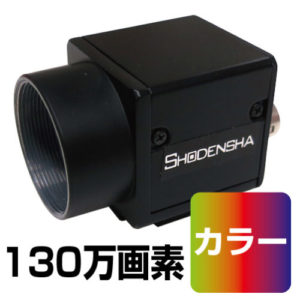When CMOS sensors first began to be used in cameras, the following differences were recognized between them and CCD sensors.
1. CD provides more natural color reproduction.
2. CCD images are clearer.
On the other hand, it has been pointed out that with CMOS sensors, minute blurring occurs in images and the clarity is poor. .
3. The CMOS sensor uses a rolling shutter method, which tends to cause distortion and afterimages in moving scenes.
There was an impression that early CMOS sensors were of low quality, but as technology advances, the performance of CMOS sensors has improved and is now comparable to CCD sensors. Regarding the difference between CCD and CMOS
<CCD is・・・>
1. Occurrence of smear (a phenomenon in which a band of light appears on the image).
2. Often more expensive than CMOS.
3. Power consumption is higher than CMOS sensors, making them unsuitable for battery-powered digital cameras and video cameras.
4. Because it is not possible to read out only a portion of the image sensor, it is difficult to lower the resolution and increase the frame rate.
<CMOS is・・・>
1. CMOS sensors have an amplifier built into each pixel, which tends to cause certain pattern noise due to variations in performance.
2. The production process for CMOS sensors is similar to that for CPUs and LSIs, and they can be manufactured at lower costs than CCD sensors.
3. CMOS sensors can be operated at lower voltages, which facilitates faster data readout and higher resolution.
4. Because partial readouts are possible, cameras using CMOS sensors can improve frame rates by lowering the resolution.
CCD sensors suffer from smearing, while pattern noise is a major problem with CMOS sensors. However, with improvements in manufacturing technology and noise correction, pattern noise in CMOS sensors is gradually becoming less noticeable.
Also,
CMOS → Rolling shutter → Sensitive to movement
CCD → Global shutter → Strong against movement
Although there was a relationship that was sometimes expressed as “CMOS sensors”, CMOS sensors with global shutters are now being produced.
In the past, CCD was the main focus in device development, but today CMOS has become mainstream, and technological advances are supporting improvements in CMOS performance.
As a result, the idea that CCD is superior to CMOS is no longer universally applicable; image quality and performance vary depending on the type of sensor.
As a result of sensor manufacturers, particularly Sony, discontinuing the production of CCDs, the switch to CMOS is accelerating in fields that traditionally used CCDs.
Shodensha provides cameras equipped with CMOS sensors with global shutter functionality, and supports the smooth transition from CCD to CMOS.
The competitive price of CMOS sensors directly contributes to lower operating costs.
Summary
1. CCD sensors are said to have the ability to reproduce more natural colors.
2. The image provided by CCD sensor is clearer. On the other hand, images from CMOS sensors may have minute blurring, which affects the clarity of the image quality.
3. Since the CMOS sensor is based on a rolling shutter method, it has been evaluated as being vulnerable to capturing moving scenes.
However, over time, CMOS technology has improved significantly and now it is comparable to CCD sensors. Therefore, the general idea that CCD is superior to CMOS no longer applies universally, and differences in image quality and performance now depend on the unique characteristics of each sensor. Additionally, CMOS sensors equipped with a global shutter are currently being produced.
Shodensha Global Shutter CMOS camera lineup
 |
USB3 Vision camera (USB3.0, 1.3 MP, color) CS130U-C
USB3 Vision camera (USB3.0, 0.4 MP, color) CS41-C |
|



